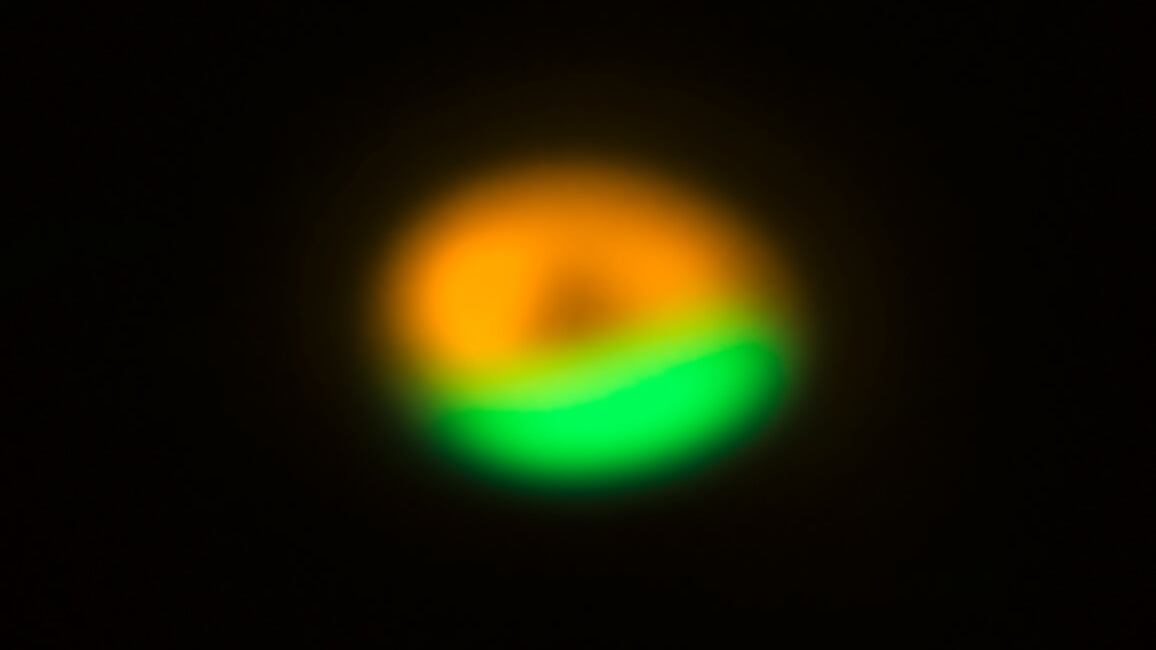We’re all made of stardust, which makes it an extremely important starting point to the formation of any life in the universe. And now it seems we’ve stumbled on an extremely exciting glob of stardust hundreds of light-years away.
Researchers at Leiden Observatory in the Netherlands have discovered the largest molecule ever to be found in a planet-forming disc swirling around a distant star 444 light-years away. The molecule, called dimethyl ether, is an organic compound made of oxygen, hydrogen, and carbon. It’s among one of the hundreds of molecules believed vital for seeding organic life in the universe. This new finding, published Tuesday in Astronomy & Astrophysics, may offer insights into how and in what ways life's essential chemical building blocks end up on other planets.

An artistic impression of the planet-forming disc around Oph-IRS 48. The blue images indicates the presence of the dimethyl ether. A model of the molecule is also shown.
ESO/L. Calçada, ALMAThe Dutch researchers found dimethyl ether in a cloud surrounding a young star called Oph-IRS 48 in the constellation Ophiuchus. Over the last decade, Oph-IRS 48 has been a subject of great interest for its massive, cashew-shaped ring of dust and ice. Astronomers believe rings like this contain the leftovers from the birth of new stars and planets, capable of trapping large-sized molecules that eventually clump together to form comets, asteroids, and even other planets.
ADVERTISEMENT
More recently, astronomers discovered Oph-IRS 48’s ring has reservoirs of ice potentially brimming with trapped complex molecules. Within these ice reservoirs are where the Dutch astronomers detected dimethyl ether as it evaporated and escaped under the star’s heat. And this discovery has astronomers treasure hunting for more complex, life-giving molecules elsewhere in other ice reservoirs nearby where stars and planets are born.

Several complex organic molecules have been found around Oph-IRS 48, including formaldehyde (orange), methanol (green) and dimethyl ether (blue). There's also a massive presence of carbon monoxide gas (purple).
ALMA (ESO/NAOJ/NRAO)/A. Pohl“We are incredibly pleased that we can now start to follow the entire journey of these complex molecules from the clouds that form stars, to planet-forming discs, and to comets,” said Nienke van der Marel, a Leiden Observatory researcher and study co-author, in a press release. “Hopefully with more observations we can get a step closer to understanding the origin of prebiotic molecules in our own solar system.”






